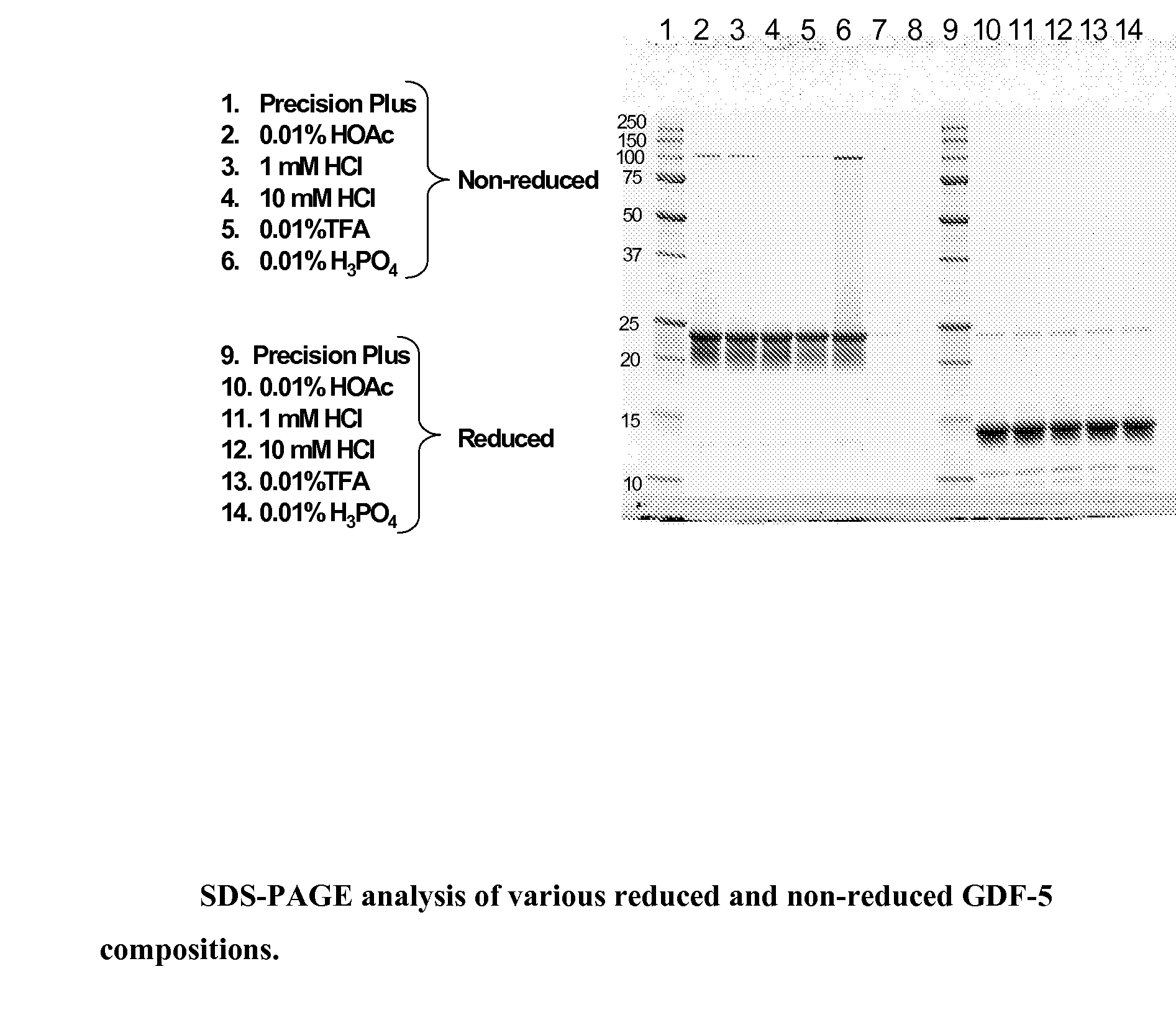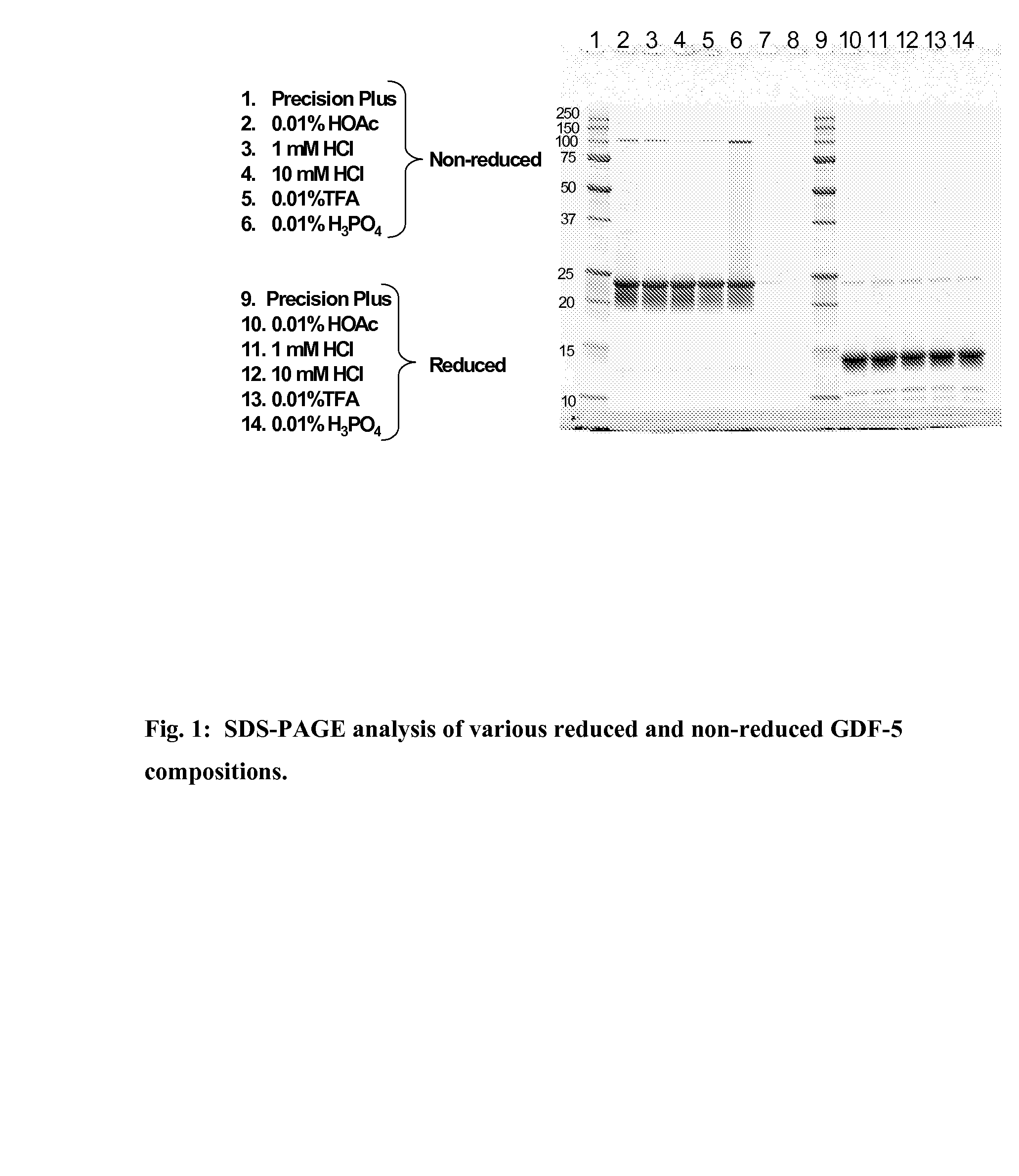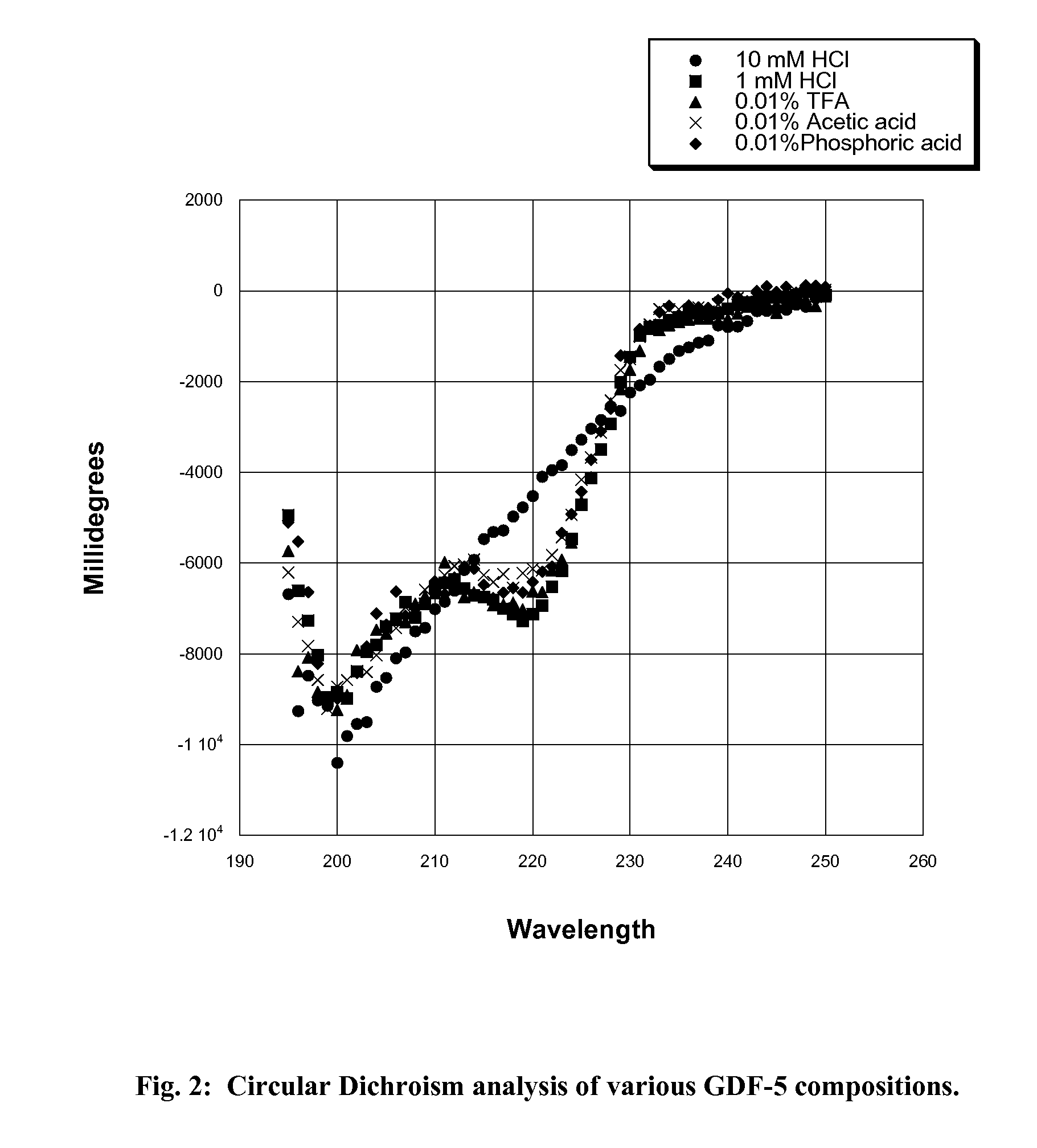Gdf-5 protein storage
a technology of gdf-5 and protein storage, which is applied in the field of liquid compositions of bone morphogenetic proteins, can solve the problems of biocompatible compositions of gdf-5 proteins that present great challenges to obtain reasonable solubility and concurrent stability of proteins, and achieve the effects of improving the stability of gdf-5 proteins, and avoiding adverse effects on the solubility of proteins
- Summary
- Abstract
- Description
- Claims
- Application Information
AI Technical Summary
Benefits of technology
Problems solved by technology
Method used
Image
Examples
example 1
[0038]Four different solvent systems, 1 mM HCl, 0.01% (v / v) acetic acid, 0.01% (v / v) TFA, and 0.01% (v / v) phosphoric acid, were tested for their ability to provide improved GDF-5 protein stability over the standard 10 mM HCl solvent system currently used. Approximately 1-2 ml of bulk GDF-5 protein (3.8 mg / ml) in 10 mM HCl was taken from a freshly thawed sample and dialyzed for 24 hours at 2-8° C. with 3 changes each of 1 liter of test solution to produce a GDF-5 protein solution in each of the four different solvent systems. The concentration of the dialysates was determined from the absorbance value at 280 nm using an extinction coefficient of 1.16 for a 1 mg / ml solution and a pathlength of 1 cm. The GDF-5 protein solutions were then analyzed by SDS-PAGE, Circular Dichroism (CD), Differential Scanning Calorimetry (DSC), and MALDI-TOF.
SDS-PAGE
[0039]The GDF-5 protein samples were diluted in Bio-Rad 8-16% gradient gel appropriate sample buffer (provided by the manufacturer) either wit...
example 2
[0046]An attempt was made to assess solubility of GDF-5 in 20 mM acetic acid. Stock GDF-5 in 10 mM HCl (3.8 mg / mL) was dialyzed against 20 mM acetic acid with a 3,500 MW cut off membrane, then lyophilized, and finally, the dried mass was reconstituted in 20 mM acetic acid. The OD at 280 nm was determined. It was noted that a clear solution was readily obtained with 6.5 mg / mL GDF-5 in 20 mM acetic acid. In a separate attempt the GDF-5 protein in 20 mM acetic acid was lyophilized and then reconstituted in 1 mM HCl. Again, the OD at 280 nm was determined and the results indicated that a clear solution could be readily obtained with a GDF-5 protein concentration of 6.5 mg / mL.
example 3
[0047]The stability of GDF-5 protein was evaluated through five freeze / thaw cycles in different storage solvents, including 1 mM HCl, 10 mM HCl, 0.01% (v / v) TFA, and 50 mM acetic acid. Bulk GDF-5 in 10 mM HCl was removed from −80° C. and thawed at 2-8° C. The GDF-5 protein solution was then dialyzed with the selected solvents at 2-8° C. overnight (dialysis cassettes: Pierce, Cat #66380, 10000 MWCO). The dialyzed samples were transferred into small vials at about 1 mL / vial and placed at −80° C. In each freeze / thaw cycle, the test samples were frozen at −80° C. for at least 19 hours and thawed at room temperature for at least 5 hours. At the end of each cycle one vial of each solvent sample was removed and stored at −80° C. prior to analysis so that all the samples were analyzed at same time for visual appearance, rp-HPLC, UV spectroscopy, and pH.
[0048]The test samples in glass vials were checked for clarity and particles. The sample vials were inspected using a vertical light against...
PUM
| Property | Measurement | Unit |
|---|---|---|
| temperature | aaaaa | aaaaa |
| pH | aaaaa | aaaaa |
| concentrations | aaaaa | aaaaa |
Abstract
Description
Claims
Application Information
 Login to View More
Login to View More - R&D
- Intellectual Property
- Life Sciences
- Materials
- Tech Scout
- Unparalleled Data Quality
- Higher Quality Content
- 60% Fewer Hallucinations
Browse by: Latest US Patents, China's latest patents, Technical Efficacy Thesaurus, Application Domain, Technology Topic, Popular Technical Reports.
© 2025 PatSnap. All rights reserved.Legal|Privacy policy|Modern Slavery Act Transparency Statement|Sitemap|About US| Contact US: help@patsnap.com



